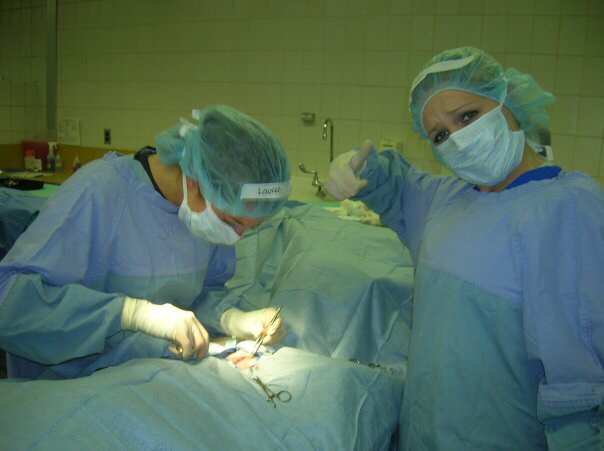The "Good Death"
The term euthanasia is derived from two Greek words—eu, which means good, and thanatos, which means death. In a report published in 2001, the American Veterinary Medical Association defined this “good death” as follows: “Euthanasia is the act of inducing humane death in an animal. It is our responsibility as veterinarians and human beings to ensure that if an animal’s life is to be taken, it is done with the highest degree of respect, and with an emphasis on making the death as painless and distress-free as possible.”
“All pet owners should know the facts about euthanasia, which is a very complicated issue,” says Fred Scott, DVM, PhD, former director of Cornell University’s Feline Health Center. “We all want to spare our animals as much suffering as possible, and in situations where a cat is seriously ill and in pain and we’ve run out of treatment alternatives, the euthanasia option can be very helpful. But it’s always both a blessing and a curse—a blessing that we can do it in order to relieve an animal’s suffering, but a curse in that we have to make the decision.”
The Preliminaries
In most cases, there is a sound and genuinely humane reason for considering the procedure. The pet may have a chronic, progressive, recurrent disease for which all treatment options have been exhausted. It may be experiencing end-stage organ failure that, after an indefinite period of pain and suffering, will inevitably be fatal. It has developed a neurologic condition that makes it extremely difficult to care for. Or it has been hit by a car and injured beyond repair.
Although a veterinarian may point out that an injury or disease condition would justify euthanasia, the owner’s authorization for the procedure is always required.
After signing the authorization, the owner can usually elect whether to be present during the procedure, to view the pet’s remains afterward or to bid farewell to the animal before the procedure is begun. “I always prefer to offer owners as many options as possible,” says Dr. Scott. “If they want to be present during the procedure, I have no problem with that.
"If there are children involved, I strongly suggest that parents discuss it with them beforehand. Avoid using euphemisms such as ‘putting to sleep,’ because such terms can be very confusing to youngsters. If you let them know exactly what’s going on and why, then it’s fine if the whole family is present. Unless a severely traumatized animal is involved, euthanasia is almost always an elective procedure, so the family can prepare for it together ahead of time.”
Also prior to the procedure, owners are usually asked about the animal’s remains. The owners may want to take the euthanized animal’s body home with them and personally see to its cremation or burial, or they may choose to have the veterinary clinic make the arrangements. Either way, if cremation is chosen, owners can opt to have the ashes returned to them.
The Procedure
Euthanasia is always performed by a licensed veterinarian. The procedure involves the veterinarian giving sedation intra-muscularly (in the muscle), placing an IV (intra-venous) catheter to establish a vein, and a lethal injection of a barbiturate anesthetic (sodium pentobarbitol), which, according to the AVMA has the ability to induce loss of consciousness and death without causing the pet any pain, distress, anxiety or apprehension. Sodium pentobarbitol is known to act rapidly and reliably. Sedation take about 5-10 minutes to take effect prior to the doctor administering the IV catheter. Our goal is to mimic your pet just going to sleep as much as possible. If you have any questions about the procedure, please do not hesitate to ask.
The drug overdose will quickly cause the animal’s heartbeat to slow down and stop. Its blood circulation will cease, its brain will stop functioning and it will stop breathing. “In virtually all cases, the pet will lose consciousness and simply drift peacefully and painlessly away within a very short time, a matter of seconds,” says Dr. Scott.
Planning Ahead- Concluding business
Preparing yourself in advance for the death of your pet, while emotionally taxing, is a wise and thoughtful thing to do. Certainly, none of us wants to think of that day, the day our heart will be broken into a million pieces. Thinking about this ahead of time will give you and your family the opportunity to discuss how you would like to memorialize your beloved pet and to celebrate the life that you all shared together.
There are numerous elements to think about regarding the death of your pet and your final wishes. Take this time to reflect upon what your pet will need in respectful death care treatment, as well as the support you will need as a grieving pet parent. Making sure that your beloved pet is treated with the dignity and respect they deserve will be of the utmost importance at this time. Knowing your various options will relieve much of the stress you may have in ensuring what you do is appropriate to not only honor the life of your pet but to make sure that they are receiving the care and treatment in death that was as important to you for them in life.
We typically offer one of three options for care of remains; private cremation with ashes returned, group cremation with no ashes returned or at-home burial (performed by the owner of the pet, not the veterinarian). If you choose to have private cremation with ashes returned, the standard urn to be returned is a cedar urn (that can be unlocked, opened and locked with a key), and a brass plate with your pet's name. We also offer a clay paw print which is an individual mold of your pet's paw print made out of clay.
Final Gift Crematorium offers a wide variety of options for people to choose from for their pet's remains. Please visit https://www.finalgift.com/memorial-products/ for a list of memorial products provided by the crematorium. Prices may vary.
Saying Goodbye
There are more options today than ever before to make an end-of-life plan for your pet if he or she is experiencing aged, chronic or terminal illness. Often times with acute and tragic losses we do not have time to make such plans but if we are afforded the time to make such plans you can consider the following questions to help make decisions ahead of time that make sense for your pet as well as you and your family emotionally, physically and financially.
- Who will help with end-of-life experience with intervention through euthanasia?
- In local veterinary office or in-home option?
- Who will be present during end-of-life experience?
After the decision is made you may have some questions as to the process and if there are other options.
Should you be present for the procedure?
This is a very personal decision and there is no wrong answer. Many people simply cannot watch for emotional reasons. Others want to be sure their pet has at least one familiar family member there throughout. It is best to decide in advance which family members, if any, want to be there.
Every owner wants to think of euthanasia as a gentle slipping into death much like falling asleep. While every effort is made to approximate this vision, the pet will probably not close its eyes, and there may be a final twitch or gasp. Some animals will urinate or release other body fluids as they relax. To help ease this transition between and death, sometimes a tranquilizer is given first, thus alleviating some of the above.
How is the procedure performed?
The intravenous catheter serves several purposes. First, the euthanasia solution is painful if administered outside the vein. The catheter ensures clean access to the vein, even if the owner is holding the pet. The catheter also allows for a sedative to be administered prior to the euthanasia solution. Not all veterinarians use catheters.
After the catheter is placed, the owner may spend some last time alone with the pet if desired. The procedure itself is very fast. If a sedative is to be used, it is given first so that the pet is euthanized from a sleeping status. The euthanasia solution, generally dyed a bright color so that it cannot be mistaken for anything else, is delivered and death comes peacefully in a matter of seconds. The owner is allowed to remain with the pet for final private goodbyes. At the end of this time after the last goodbyes and caresses, the doctor will transport the remains unless the owner requests to keep the remains for at home burial.
Final Arrangements
- Burial or Cremation?
- Home Burial or at a local pet cemetery?
- For burial, will you want a casket to protect the pet’s body?
- If cremation, will you want the ashes returned?
- For cremation, is it important for you to have your pet’s body cremated privately in the crematory?
Service Options
Many families will also want to have that one last time to visit their pet after death, a visitation or wake, if you will. While this may seem like a trivial thing – or possibly something that you consider morbid and odd- this one last time with your pet is valuable time spent. A time to see your pet at peace. A time for your children to pay tribute by bringing in items that were special to your pet. A time to begin the grief journey and a time to say that final good-bye.
-Special readings and playing music
-Candle light tribute
-Planting a tree or flower garden
-Creating and sharing videos or photos on social media
-Make a Donation to a local shelter or pet loss organization
Memorialization Options
Making a decision on memorialization products is a personal process. This will be reflective of the life shared with your pet, your life style, your personal style, and those items that are reflective of your pet’s personality. It’s also important to take into consideration where your memorialization pieces will go in your home, or in your yard, and how you want the item to look, either blending in with your decor or making an individual statement. In addition, if you have a large pet family, consider a memorialization piece where all of the pets can be together.
-Grave stone
-Decorative urn
-Clay pawprint
-Locket jewelry for ashes and/or hair
-Jewelry of pet’s paw or nose print
-Artwork such as painting or photograph of pet
-Visit www.pet-loss.net/memorial.shtml for a list of ways to memorialize your pet as well as links to memorial products, headstones, urns, caskets, and portraits and other products.
Final Gift Crematorium offers a wide variety of options for people to choose from for their pet's remains. Please visit https://www.finalgift.com/memorial-products/ for a list of memorial products provided by the crematorium.
Information provided by Cornell University College of Veterinary Medicine, Ithaca, NY 14853-6401, 2014
Day By Day, https://daybydaypetsupport.com/planning-ahead/
Gemadam custom necklaces
Custom Pet Fur Locket Urn Necklace with Photo & Name, Pet Keepsakes, Pet Memorial Lockets, Gift for Pet Lover, Pet Lost Gift
My petsies custom stuffed animals
“Some pets come into our lives and quickly go. Some stay for a while and leave paw prints in our hearts and we are never, ever the same.” -Anonymous



